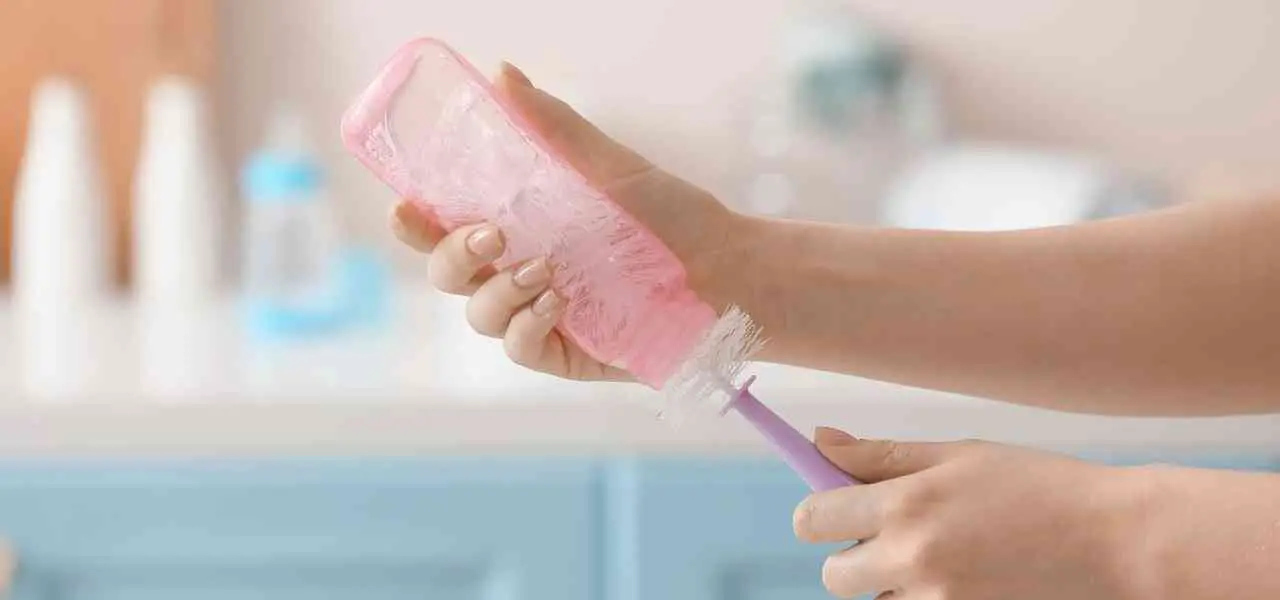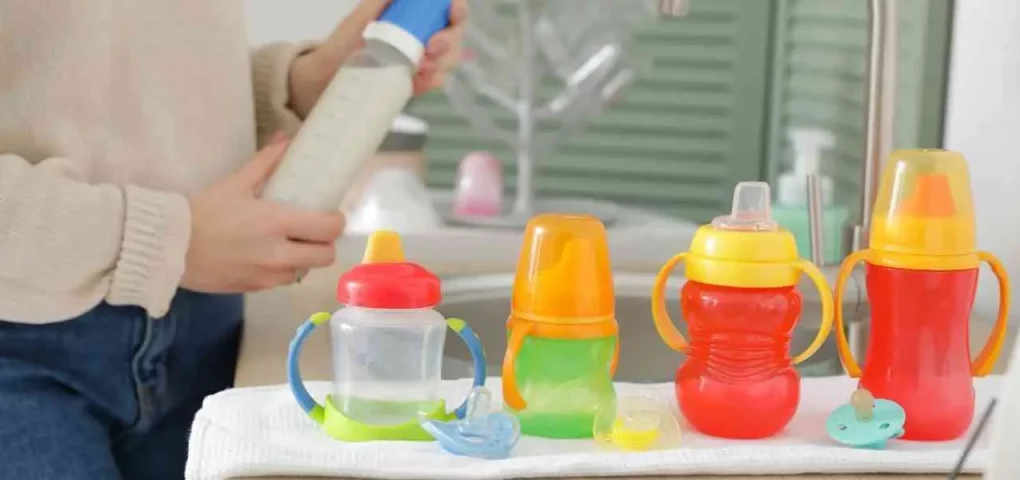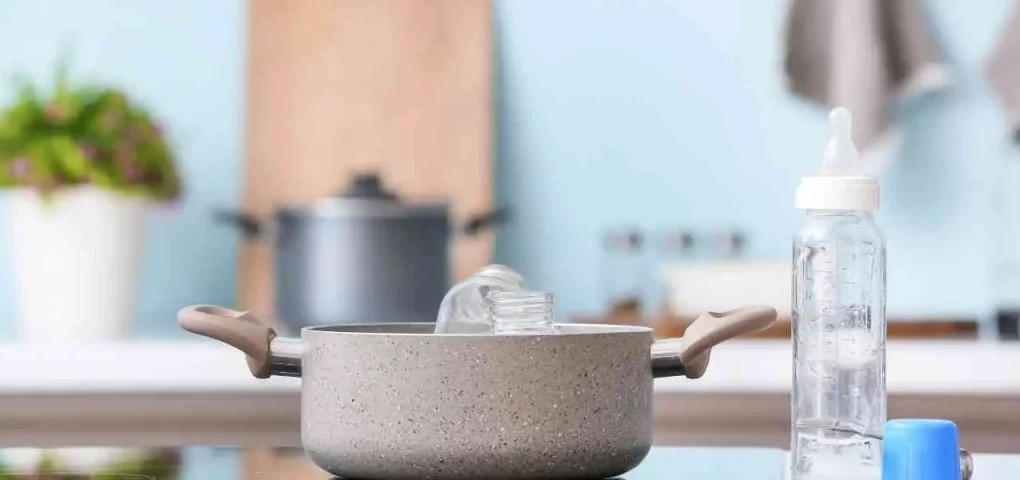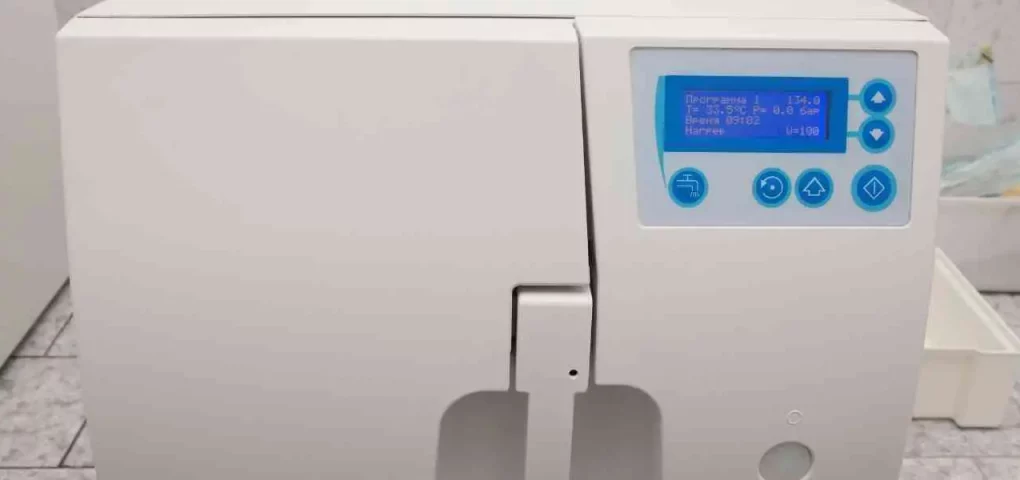
We know what clean is, but how sure are you sterilizing or cleaning your baby bottles correctly? How do you sterilize or clean baby bottles or your feeding equipment?
How often do you sterilize, store infant feeding items, and check on the cleaning equipment itself? Do you take ample time to look at all bottle parts up to the details and areas not frequently reached by the brushes?
Why Is It Important To Clean Baby Bottles?

Powdered Formula Milk is a perfect medium in which bacteria like rotavirus, amoeba, and hepatitis A can grow. This is the reason why sterilizing baby bottles is very important. Bacteria can live up to several weeks on the surfaces of the baby bottles.
Since our baby’s immune system is still immature until their 12th month, we seriously need to ensure every detail of the very thing they put in their tiny mouths is clean enough. We have our own cleaning standards but bear in mind to wash baby bottles correctly for extra protection.
As a newbie parent or a first-time caretaker, it might be too challenging for you to wash and sterilize baby bottles and bottle parts correctly. No worries, as long as you follow the steps below carefully, you are just doing just fine.
Here are some hints and tips on correctly cleaning and sterilizing baby bottles and bottle parts.
How To Clean Baby Bottles Correctly
- When cleaning your baby bottles, always wash your hands first with soapy water and dry them with a clean towel.
- Check baby bottle, bottle parts, and nipple or teats for any cracks while you disassemble the feeding bottle. (Cracks can lead to tearing, which can cause choking of our babies.)
- Be it a glass bottle or a plastic bottle, wash and clean all feeding equipment in soapy water, including the thread where the caps screw on.
- Use a dedicated bottle brush to scrub inside part of the bottle and teat.
- Squirt water through the teats and rinse thoroughly.
- Keep the baby bottles air dry before storing them.
Keep in mind to get a new dedicated bottle brush once the bristles are worn out. They need to be both stiff and soft to remove milk residue from the bottle.
Sterilizing baby bottles and all the bottle parts properly
Clean the baby bottles using soapy water to remove the residue and germs from the bottle physically. Sterilizing may take an extra mile to clean more bacteria on the items that have been already cleaned. But this is done to provide additional protection to our babies.
But if you are breastfeeding, you only need to sterilize occasionally, most probably 2-3 times a week, and the boiling method may be good enough. After air-drying the feeding bottles, here are three methods on how to sterilize.
1. Using boiling water

This is the easiest and most economical method to sterilize baby bottles. First, you need to bring the water to a boil for at least 30 minutes. Why 30 minutes? Because bacteria in the potable water die within that time frame.
Then toss your still disassembled bottle parts in the preheated boiling water, put the fire into medium heat, and then time for another 15-20 minutes. Make sure to submerge all the parts in the boiling water. Turn off the heat and allow the bottle to simmer for a while.
Using your bottle thongs, remove the feeding equipment from the pot and allow them to air-dry. Place them in a clean and sealed container with the label “strictly for the feeding bottles only.” Others prefer stocking them in the fridge. Either way is acceptable.
2. Using an electric sanitizer

They come in handy and can be bought online or from any department store near your place. It’s hassle-free but make sure you still clean the bottles thoroughly following the steps above and dry them before stocking them all together in the sterilizer. For now, this is the safer method.
For working moms, this saves them the time to sanitize. Be sure also to clean your sanitizing tools regularly.
3. Through steam sterilization
After air-drying the feeding bottles, arrange them in the sterilizer, ensuring there’s enough room between each bottle, teat, and screw cap for the steam to circulate all the surfaces. Follow the manufacturer’s manual on how much water to add.
Turn on and push the start button if you use the microwave sterilizer. But if you don’t have a microwave, you can use the big pans and just put the hot stainless potholder in the center.
Using the thirty-minute preheated water, fill your pans to 1/4. Arrange the feeding equipment properly and have them steamed in medium heat for 15-20 minutes. After which, air-dry the parts before keeping them in the feeding bottle container.
Final Thoughts
There you have it – the proper ways to sterilize and clean baby bottles to ensure your infant’s health and safety! I hope you find those tips helpful, and if you have any questions, feel free to share them in the comment section. Also, don’t forget to share this article with your friends and relatives who may be first-time parents or are expecting.
———-
Enjoyed this article? Share it with the other mommas out there too! And don’t forget to check out our other posts on the blog.


Leave a Reply